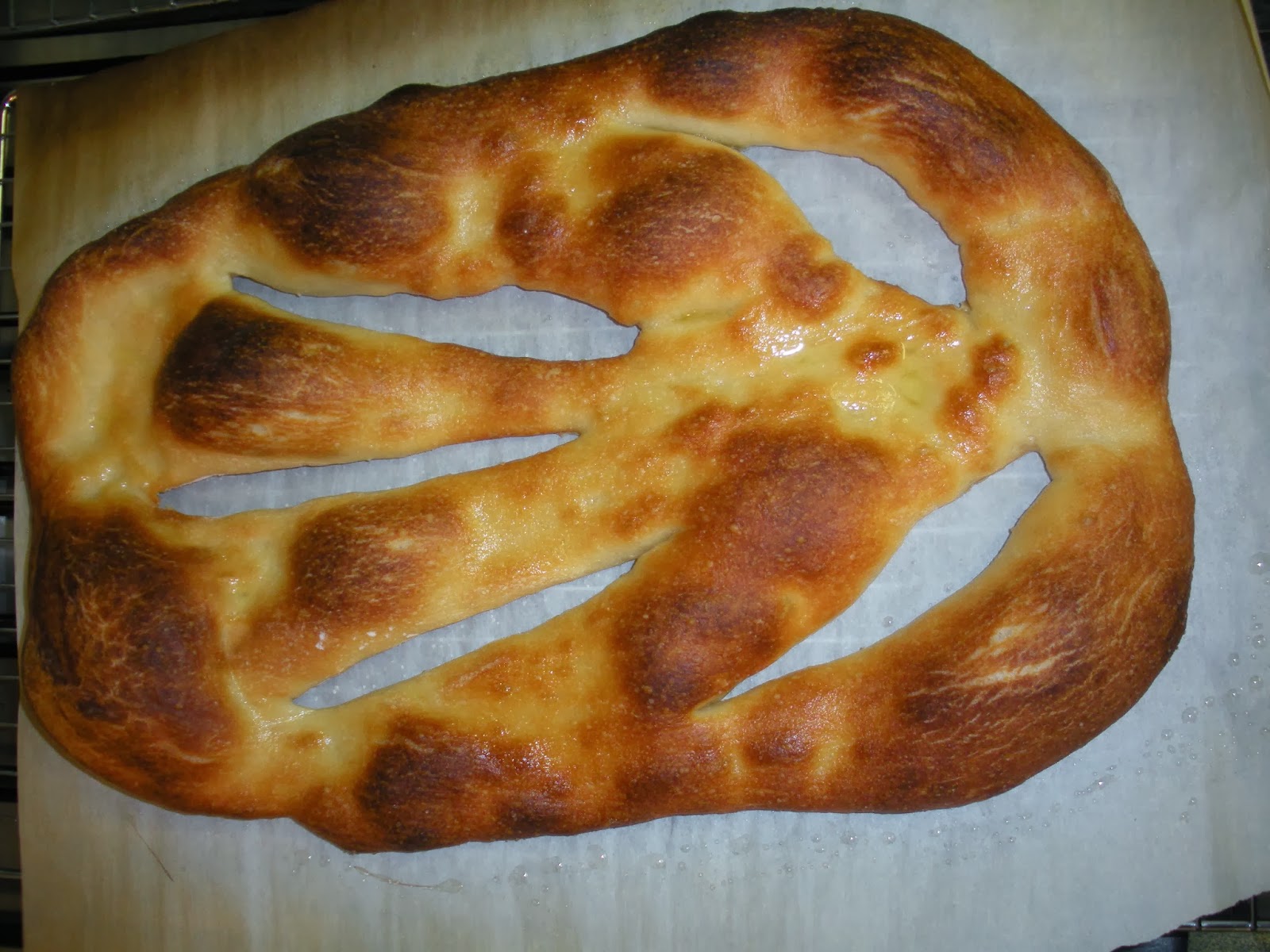 After fermenting overnight the biga is cut in to pieces and placed in to warm water before being mixed with more bread flour and salt. Since the mixers were taken we chose to mix by hand. This involves a stretch, slap and fold technique that is shown in the gif. This process is repeated at least 300
After fermenting overnight the biga is cut in to pieces and placed in to warm water before being mixed with more bread flour and salt. Since the mixers were taken we chose to mix by hand. This involves a stretch, slap and fold technique that is shown in the gif. This process is repeated at least 300times until a window-pane test can be done, which is where you stretch a small amount of dough to test the gluten networks.
We then let it proof before dividing and shaping. The other groups formed their Pane Francese in to rolls, but we decided to create Fougasse. Fougasse is a flat, decorative bread that is many times given as a gift due to its attractive appearance. The name is derived from Latin for hearth because it was originally baked in the ashes of fireplaces. Instead of baking ours in ashes, we cooked ours on a stone baking hearth which gave it a nice crispy crust. It was brushed with olive oil and sprinkled with salt and pepper before baking to give
 |
| Our Fougasse |
Our Fogasse turned out very nicely with a texture similar to breadsticks. The crust was thick enough to give a contrast to the extremly open and chewy crumb. This bread would pair greatly with pasta and makes three fougasse so it is also good for gifting.
In addition to creating the fougasse me and my partner made homemade Nutella. It blew commercial Nutella out of the water. We first toasted hazelnuts and then placed the toasted nuts into a bowl which was covered and then shook to remove the skins. I found that placing them in a dish towel and rubbing and hitting the dish towel removed the skins much more efficiently but it made for a very dirty dish towel, just pick which you would rather have more skins or a dirty towel. The nuts were placed in a food processor and processed until it formed a smooth paste. The paste was mixed with hazelnut oil, powdered sugar, and cocoa powder to form the final product. It was divine and I plan on making it for myself, "all for my self!"
No comments:
Post a Comment